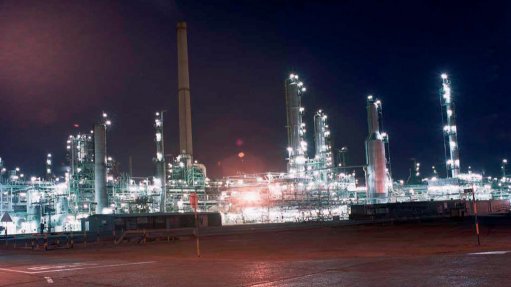
JSE-listed Sasol expects to deliver mixed results for the six months ended December 31, with strong business performance across most of its value chain hampered by labour action, one-off items reported in the prior half-year period and a stronger rand/dollar exchange rate.
In a trading update to the market on Thursday, the group outlined expectations of a 12% to 22% – or R1.44 to R2.63 a share – year-on-year increase in earnings per share (EPS) on the EPS of R11.97 achieved during the six months to December 31, 2015.
However, headline earnings per share (HEPS) for the six months under review are expected to contract by some 34% to 44%, shaving about R8.26 to R10.68 apiece from the HEPS of R24.28 achieved in the six months to December 31, 2015.
The strengthening of the rand during the last stretch of the six-month period under review translated into losses of around R1.3-billion on the valuation of the balance sheet, compared with the translation gains of R2.6-billion during the comparative period the year before.
“The valuation impact of the stronger closing exchange rate for the period under review negatively impacted earnings by approximately R1.46 a share,” Sasol commented.
Labour action at Sasol’s mining operations shaved some R1-billion, or R1.06 a share, from the group’s headline earnings followed by a subsequent 16% contraction in mining production volumes and significantly higher one-off costs to ensure a continuous supply of coal to the Secunda Synfuels operations.
Further, the period under review did not include R2.3-billion, or R3.77 a share, in one-off items that featured in the prior year, relating mainly to the reversal of the Escravos gas-to-liquid (GTL) provision.
However, overall, Sasol delivered a strong business performance across most of the value chain.
“Secunda Synfuels’ production volumes increased by 1% and our Eurasian operations increased production volumes by 8% on the back of stronger product demand. Natref’s production volumes were down 7% mainly owing to planned shutdowns during the period under review,” the company highlighted.
Sasol posted an 11% and 2% year-on-year increase in the normalised sales volumes at its base chemicals and performance chemicals businesses respectively, mostly owing to stronger demand, higher chemical margins and improved plant stability.
Liquid fuels sales volumes decreased 2% owing to the Natref planned shutdowns and more volumes allocated to the higher-margin-yielding chemical businesses, while Oryx GTL achieved a utilisation rate of 95% with the run-rate of production in line with the company’s guidance.
“We have seen a steady and continued recovery in global oil and product prices during the period under review. Normalised cash fixed costs continued to trend well within inflation for the period under review,” Sasol concluded.
Sasol plans to publish its financial results for the interim period under review on February 27.